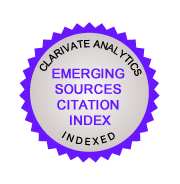Uranium contamination of fluvial systems. Mechanisms and processes. Part II : dynamics of groundwater, stream interaction. A case study from Koekemoerspruit (South Africa)
DOI:
https://doi.org/10.18172/cig.1128Abstract
Dissolved uranium from tailings-deposits of various goldmines in South Africa was found to migrate via seepage and groundwater into adjacent fluvial systems. The extent of the associated non-point pollution depends not only on the concentration of uranium in the water but also on the volumes of polluted groundwater seeping into the stream channel. While the uranium concentration in the groundwater is rather constant and therefore comparably easy to determine, the same is not true for the water exchange at the groundwater-stream interface. In order to track the relevant hydraulic processes, in-situ data-logger controlled probes were placed within the system measuring gauging heights and electric conductivity (EC) in 10-minute intervals. As a result of a steep hydraulic gradient between water-saturated tailing-deposits and the receiving watercourse, exfiltration (baseflow) of contaminated groundwater generally dominates. However, short-term inversions of the direction of flow (infiltration of stream water into the groundwater) were also observed. They are attributed the artificial flow-regime of the Koekemoer Spruit, which results from a pumping scheme that discharges dolomitic groundwater into the stream. Electricity costs-related differences of pumping rates lead to pronounced diurnal fluctuations of gauging heights in the stream, which in turn cause even higher fluctuations of the associated groundwater table (up to 90cm a day). The consequences and mechanisms of these man-made stream fluctuations for the hydraulic stream-groundwater interaction.Downloads
Downloads
Published
How to Cite
Issue
Section
License
The authors retain copyright of articles and authorize Cuadernos de Investigación Geográfica / Geographical Research Letters the first publication. They are free to share and redistribute the article without obtaining permission from the publisher as long as they give appropriate credit to the editor and the journal.
Self-archiving is allowed too. In fact, it is recommendable to deposit a PDF version of the paper in academic and/or institutional repositories.
It is recommended to include the DOI number.
This journal is licensed under a Creative Commons Attribution 4.0 International License













